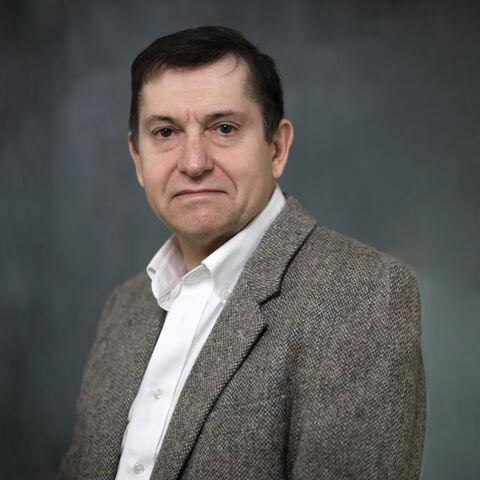Robert Thorne
Professor, Stephen H. Weiss Presidential Fellow
My interests include synchrotron X-ray diffraction studies of protein structure and dynamics; the physics of water, ice, and aqueous glasses; biological cryopreservation; X-ray fluorescence imaging of ancient artifacts; charge-density-wave conductors; and physics education.
Research
X-ray Crystallographic Studies of Protein Structure and Dynamics
High-resolution structures of proteins and other biological macromolecules determined using X-ray crystallography provide insight into molecular function and the basis for design and discovery of new pharmaceutical compounds. However, growing suitable quality protein crystals is often very challenging; the crystals are damaged by X-rays and by the cryogenic cooling used to reduce X-ray damage; and structures determined at cryogenic temperatures do not capture all biologically relevant information, especially about subtle spatially correlated displacements essential to, e.g., ligand binding and enzymatic function. We are focused on developing experimental and computational methods to significantly increase both the quality and kinds of information about protein structure, energy landscapes, and function that can be obtained via crystallography and other X-ray based methods. Several of our discoveries have been commercialized by MiTeGen, LLC, and are used by structural biologists around the world.
Small Angle X-Ray Scattering of Biomolecules at Cryogenic Temperature
Small-angle X-ray scattering (SAXS) is a simple and powerful technique for extracting information from biomolecules in solution about biomolecular structure and changes in structure in response to, e.g., drug binding, temperature, or pH. While interest in SAXS has exploded in the last decade, its application is limited by the rapid radiation damage that occurs to proteins in solution at room temperature. Drawing upon our expertise in the physics of ice formation and radiation damage, we have made the first successful SAXS measurements on biomolecules at cryogenic temperatures, and are now working to develop this into a general purpose method. CryoSAXS promises to dramatically reduce sample volumes per measurement, to simplify sample handling, storage, and data collection, and to allow new approaches to time resolved studies of enzymatic mechanism.
Nucleation, Growth, and Glass Formation in Aqueous Systems
The remarkably complex phase diagram of water and the physics of ice nucleation and growth are important in fields ranging from cryobiology and cryopreservation to cloud formation and climate change. We are studying fundamental aspects of ice and glass formation in aqueous systems, especially in nanoconfined environments and in the regimes of ultrafast cooling and ultrafast warming, and their applications in biological cryopreservation and structural biology.
X-ray Fluorescence Imaging of Ancient Artifacts
In collaboration with classicists and archaeologists, we have used synchrotron-based X-ray fluorescence imaging and complementary methods to study ancient artifacts including Greek and Latin inscriptions on stone, ancient glasses from Iraq, and artifacts from the Maya and other Mesoamerican cultures. XRF imaging allows us to explore the tools and materials used in creating the objects, to discover how the objects looked at the time of their creation, and to recover lost or hidden text and images.
Physics Education
Future U.S. economic competitiveness depends upon our ability to recruit and train a highly skilled workforce in science, technology, engineering, and the health professions. Physics is a critical gateway to all of these disciplines, and provides the foundation for fundamental understanding, for analyzing data, and for solving problems. Following Cornell’s long tradition of innovation in physics education, we have been developing teaching methods and materials that engage students of diverse backgrounds and interests, and that help them to develop both mastery of and a broader appreciation for physics. We have also developed a Undergraduate Teaching Assistant program that introduces roughly 100 Cornell undergraduates per semester to the practical and intellectual challenges of teaching in our introductory physics courses, and that also provides support for our honors physics courses through the 3000 level. This program helps participants and students in our courses improve their mastery of physics, and encourages participants to consider careers in middle- and high school STEM education.
Awards and Honors
- Presidential Young Investigator, 1988-1993
- Alfred P. Sloan Fellow, 1988-1990
Educational Background
- Professor, Physics, Cornell University, 2000-present
- Stephen H. Weiss Presidential Fellow, 2011-present
- Founder and CTO, MiTeGen LLC, 2004-present
- Associate Professor, Physics, Cornell University, 1994-2000
- Assistant Professor, Physics, Cornell University, 1988-1994
- Ph.D., University of Illinois Urbana-Champaign, 1987
- B.Sc., University of Manitoba, 1981

